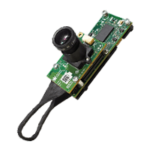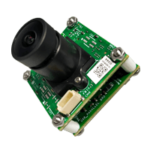Choosing the right embedded camera based on your application can be a game-changer in innovative technology. This podcast helps you to characterize the right embedded camera for smart city applications.
4 questions this podcast will answer:
01
What are the challenges faced in the variation in lighting for an embedded Cameras?02
How to manage day and night lighting while building AI and CV based applications for smart cities?03
What is the NIR lighting and Cheerleader effect of imaging?04
How to rectify the image noise using algorithms, and how VisAI labs help to solve it?
Subscribe to VisAI Labs' Newsletter
Relevant link:
Podcast Transcript:
Smart city is the new buzzword; this market is exploding. This market size is a smart city already USD 410.8 billion, and now 2020 and over the next five years, this market is projected to be worth aroundUSD 820.7 billion with CAGR 14.8%.
So, one of the consequences of the exploding is market city market is exposure the Cameras. You going to cameras. Embedded vision is going to become epiaquerts.
So then, as an engineer’s who’s working to develop smart city applications. You might question how to choose the right sensors or an Embedded Cameras any of the Smart city Application.
But then overhear, we have a mid-ride set of the application. Smart parking lot management, Smart traffic management, Surveillance & Intruder detection, Business monitoring system, and so on
All these you need choose right cameras.
Hi, this is Alphonse, and in Today’s edition of “Unravelling Computer Vision and Edge AI for the real world,” I’ll be talking about How to choose the right embedded camera for smart city applications
Based on my team’s experience in building over 15+ embedded solutions and creating cameras for this vertical way of understanding, we face building smart city application the variation in lighting.
For Example, Almost all smart city application such traffic management or parking lot management.
Your camera should be placed in the outdoor environment, which means your camera should capture within single seen the brightest objects placed under the sun and sky. , the darkest regions, such as shadows under the tree, are also captured properly.
The only way to choose the right camera is to make sure these cameras have a very wide dynamic range to accurately capture both brightest and darkest images within a single scene.
My team here, VisAI Labs, uses See3Cam_Cu20 to solve this problem.
Another subset of this lighting problem that faces while building AI and CV-based applications smart city is managing day and night lighting.
For an application such as intruder detection and surveillance, you need a camera which can run 24/7, and these cameras should able to capture detail, accurate images both day and night times.
To have such a camera, you need to have a specially designed images sensor with NIR lighting capability.
NIR lighting can help cameras manage the deficit of visible light, we see there are many specifically designed sensors. Which are highly sensitiv NIR spectrum.
To solve this particular problem, we at the VisAI Labs actually use the Hyperion Image Sensor
Now with the problem of lighting out of the way
We are now the third problem that most people will face building smart city applications, which is accurate.
In this scenario, accurate the details we are very prone to fall into to the imaging’s cheerleader effect.
Well, whilst the overall image might look perfect, once you zoom in, look at the specific at the image. You will notice individual objects very grainy, but you want the entire image and internal parts to have a high accuracy rate.
Otherwise, your algorithm will not able to process the image and give you perfect image.
Truth be said, the cameras that do surveillance and monitoring rely on providing images with low noise output.
The machine learning algorithm also depend on neutral color reproduction irrespective of the lighting condition, be it artificial or natural, to do the right processing and provide you with the right output.
The challenges in lighting also pose a significant problem in that it might induce noise in the final out, which is undesirable for most algorithms.
One way we actually solve this problem is to identify cameras with large sizes as they are typically better SNR and update you to reproduce true colors.
The camera which my team at VisAI Labs uses See3Cam_Cu20, especially when we are building be outdoor focused use cases for smart cities.
That been said, “n” no of applications for smart cities and if the implemented right can be useful to large-scale humanity.
But according to Venture Beat, more than 87% of the AI projects do not go live into the production stage.
The major problem here is that we do not choose Hardware and Edge-based ML algorithms right in the POC stage. So, the transference from POC to a protectionary application is very low.
And we, the team VisAI Labs, hope to increase it.
But then hey its a topic for another day
Hopefully, you have learned about what kind of image sensors can be used in smart city applications and find some of the suggestions of what image sensors to use to be useful.
This is Alphonse signing off, and hopefully, I would connect with you in another session of “Unraveling edge AI and Computer vision for the real world”
Ciao!





